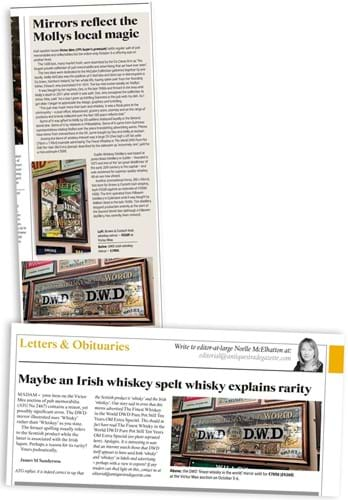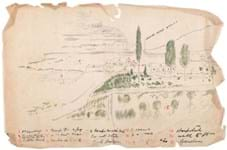In the period of manufacture, probably the first years of the 20th century by its style, possibly the last of the 19th, the affectation of the spelling had not been defined along the romantic nationalistic lines it is today.
Both whisky and whiskey were used freely, but in the UK (given that Ireland was then a part of it) the shorter version appeared more often, while in the US the longer predominated.
Since then, the placing of the ‘e’ has become more than a matter of choice and is effectively politicised.
It might be remembered that when the showcard was made ‘Scotch’ was used for both whisky and people; today it would be unwise to use it for the latter.
In terms of rarity, grand Irish showcards are not easy to find, particularly in the good condition of this one, while those advertising whiskey have a premium because the drink itself is a collectable.
After ceasing production at the time of the Second World War, DWD has been reintroduced as part of the ever-increasing interest in both whiskey and whisky, which gives this showcard a good history.
It is the subject that defines the price here. Against its peers, the showcard itself is fairly mundane in terms of letterform and decoration.
The centres of manufacture were Glasgow, Edinburgh, Birmingham and London. For sheer oomph value in decoration, Dunning of London is hard to beat, but the best letterforms were devised by the Scottish makers.
Nicholas Oddy
Head of design history and theory
Glasgow School of Art













